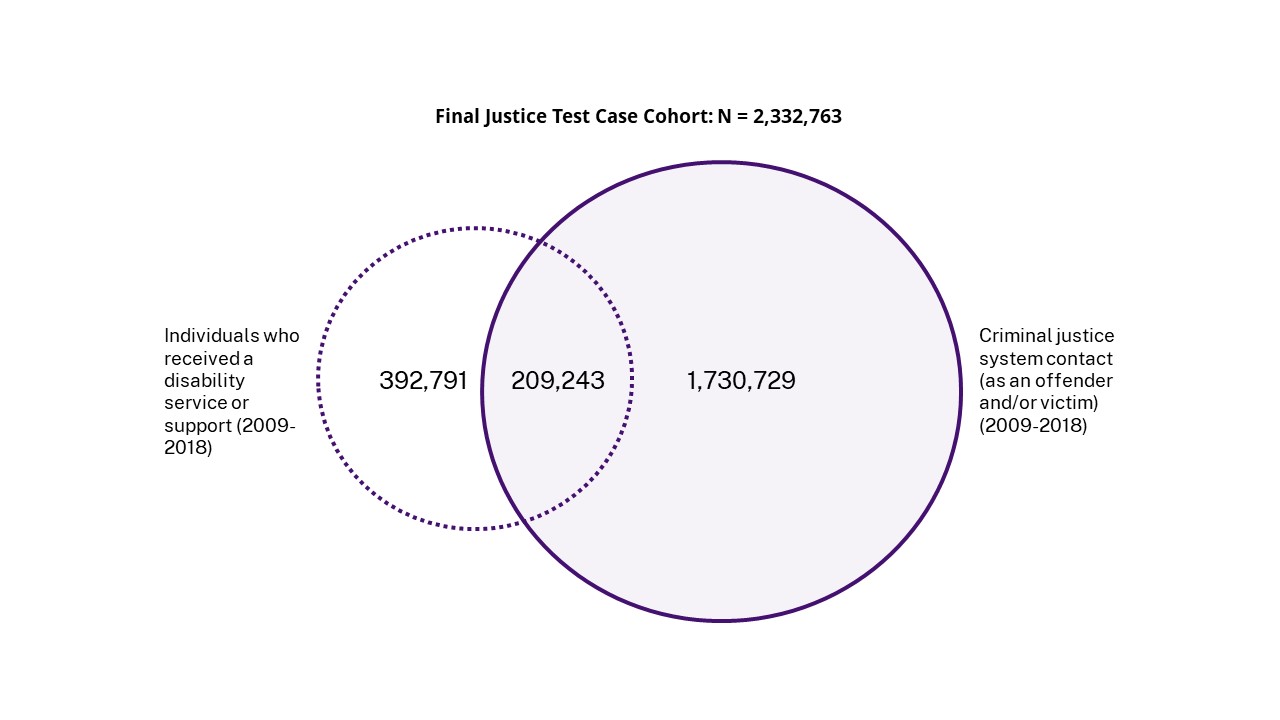Automatic language translation
Our website uses an automatic service to translate our content into different languages. These translations should be used as a guide only. See our Accessibility page for further information.
This page presents findings from the NSW Justice Test Case of the National Disability Data Asset (NDDA) pilot. Jointly led by BOCSAR and the Commonwealth Department of Social Services (DSS), the NSW Justice Test Case used State and Commonwealth administrative data collections to identify a cohort of 2.8 million people who received a core disability support and/or who had contact with the NSW criminal justice system as a victim or as an offender over a 10-year period.

Statistics drawn from this research can be explored in the sections below with interactive charts:
Last updated: